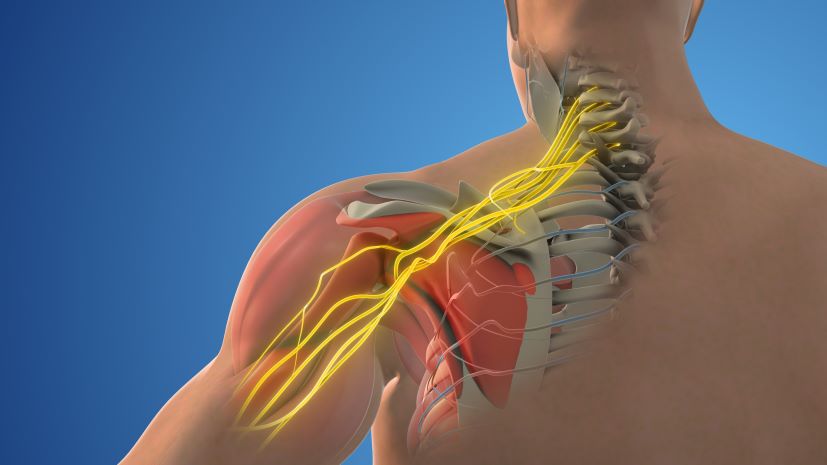Steroid Medication May Increase Risk of Adrenal Insufficiency and Optic Nerve Damage
Research By: Veeral Shah, MD
Post Date: February 8, 2021 | Publish Date: October 2020

For many children, steroid medications can help manage common conditions like asthma and eczema. However, researchers at Cincinnati Children’s have discovered that some children may experience an unintended side effect—adrenal insufficiency that could lead to optic nerve damage.
Starting with clinical data and observations, the research team explored associations between glucocorticoid use and adrenal insufficiency. They demonstrated association with pediatric pseudotumor cerebri syndrome (PTCS), a condition caused by an abnormal increase of intracranial pressure. They also demonstrated that development of optic nerve edema/damage, is linked to adrenal insufficiency.
Led by Veeral Shah, MD, PhD, of the Division of Pediatric Ophthalmology at Cincinnati Children’s, the team published their findings in the Journal of Neuro-Ophthalmology and JAMA Ophthalmology.
Discovering Clues in the Clinic
When an opthalmologist or optometrist sees a child with bilateral optic nerve swelling, they become concerned that something is going on behind the eye. As a pediatric neuro-ophthalmologist, Shah’s job is to determine what that “something” is. The answer could be a tumor, optic neuritis, or inflammatory disease. But to Shah, the most common culprit is PTCS.
A child with PTCS can experience many of the signs and symptoms of a large brain tumor—headaches, nausea, double vision, and vision loss. However, the condition gets its name from the perplexing absence of a tumor. An increase of cerebrospinal fluid pressure around the brain is behind these “false brain tumors.”
PTCS is most common in overweight and obese females of child-bearing age, potentially indicating an underlying hormone problem. But Shah observed that a smaller group of patients who were prepubescent and not overweight also presented with PTCS. In these cases, what could be the underlying cause?
One such patient of Shah’s was a 4-year-old boy diagnosed with PTCS. His treatment followed the pattern of any other patient—an MRI to ensure there is no brain tumor, a lumbar puncture to measure cerebrospinal fluid pressure in the skull, and administration of acetazolamide, an oral medication that lowers the pressure inside the skull.
At first, the boy felt relief from his symptoms. But then, the unexpected happened—pressure inside his skull went right back up. Despite repeated lumbar punctures and medication increases, the boy became increasingly symptomatic, experiencing headaches, nausea, and vomiting.
Shah suspected that another factor was at play. Although the boy’s mother had initially stated that he was not taking any other medications, Shah thought to ask again. This time, she remembered that he had recently stopped taking a steroid called megestrol. That’s when Shah made the connection between steroid use and adrenal insufficiency. Within a week of hydrocortisone therapy, the boy’s PTCS symptoms resolved.
“I started looking for this connection in my other patients,” says Shah. “I wondered: How many of these kids are adrenal insufficient? Nobody’s checking this.”
“I began looking into their histories for conditions like asthma, which affects 6 million children and 40 percent of patients are taking corticosteroids. With each puff of an inhaler, their bodies decrease the amount of steroids they’d normally produce.”
“The body also can have a similar reaction when a child is treated for eczema with hydrocortisone cream. Our finding is that these common medications can sometimes lead to adrenal insufficiency in young, pre-adolesent children,” Shah says.
Connecting the Dots Between Adrenal Insufficiency, PTCS, and Steroids
Although associations between adrenal insufficiency, PTCS, and steroids were emerging in the clinic, no large cohort studies had examined these relationships. Shah and the research team launched two studies to further explore the complex and little-understood pathophysiology of PTCS.
The first study included five children with PTCS who were prepubescent, nonobese, and experiencing adrenal insufficiency. Three of the patients had unrecognized glucocorticoid exposure.
Researchers collected data by monitoring optic nerve swelling during clinical examinations, taking photos behind the eye, and collecting images of the optic nerve. With hydrocortisone treatment, the swelling and PTCS symptoms resolved for all patients, along with a shorter time receiving therapy.
The second study involved 64 children with PTCS who had cortisol testing measured between January 2010 to September 2019. Of these, researchers found that 75% had insufficient cortisol levels or had at-risk levels. The majority of patients in both groups—70% and 80% respectively—were exposed to topical, nasal, or inhaled glucocorticoids.
These studies demonstrate the suppressive outcome that glucocorticoids could have on a child’s developing hypothalamic-pituitary-adrenal axis. Disruptions to this complex system of interactions between the hypothalamus, pituitary gland, and adrenal glands could result in adrenal insufficiency and PTCS.
Next Steps
Shah aims to raise awareness of these associations among clinicians, emphasizing the importance of cortisol testing and screening for steroid use. Next, he plans to publish more case studies involving other conditions to further demonstrate these pathways.
“The hope is that providers will begin to consider these connections in their evaluations,” says Shah. “With global awareness among pediatricians, neurologists, and ophthalmologists, we can directly benefit patient care and their outcomes.”
| Original title: | Prevalence of Adrenal Insufficiency and Glucocorticoid Use in Pediatric Pseudotumor Cerebri Syndrome |
| Published in: | Journal of Neuro-Ophthalmology |
| Publish date: | October 2020 |
Research By








